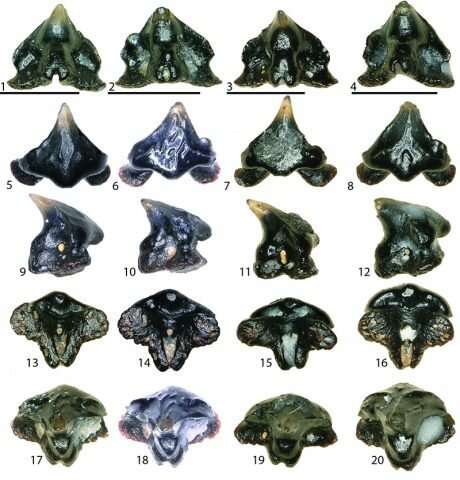Scientists continue to unveil the secrets of the Jurassic era, dinosaurs and other creatures which inhabited the Earth at that time. However, the latest discovery of an ancient shark with spaceship-shaped teeth has baffled them, showing how diverse the animal world was even at that time. The teeth of the ancient shark resemble that of a spaceship from the popular vintage game Galaga.
The newly discovered shark is nothing like its gargantuan cousin, the megalodon. Galagadon nordquistae, instead, measured only approximately 12 to 18 inches long and is related to today’s carpet sharks such as the “whiskered” wobbegong. Scientists found that Galagadon lived in the Cretaceous rivers, in which today is South Dakota. More importantly, the remains of the ancient shark with spaceship-shaped teeth were unveiled right next to the world’s most famous T. rex fossil, “Sue.”
“The more we discover about the Cretaceous period just before the non-bird dinosaurs went extinct, the more fantastic that world becomes,” Terry Gates, co-author of the paper, lecturer at North Carolina State University and research affiliate with the North Carolina Museum of Natural Sciences said in a statement. “It may seem odd today, but about 67 million years ago, what is now South Dakota was covered in forests, swamps and winding rivers.”
Even though the evidence of remains may suggest differently, Galagadon wasn’t sneaking in to catch T-rex in its jaws. The ancient shark was likely feeding on small fish, snails and crawdads. The teeth measured less than 0.03 inches, or less than a grain of sand, Gates explained, adding that they wouldn’t be noticeable without a microscope.
“It amazes me that we can find microscopic shark teeth sitting right beside the bones of the largest predators of all time,” Gates said. Its tiny teeth were discovered in the sediment left behind after paleontologists at the Field Museum found Sue’s remains. Sue is considered the most complete T. rex specimen ever described so far. Since the teeth were super-tiny, Gates recovered them with the help of volunteer Karen Nordquist, whose surname inspired the nordquistae name for the shark. Together, they managed to recover two dozen of teeth.
Although Galagadon is much smaller compared to other popular sharks, both ancient and modern, Gates finds the discovery an important addition to the currently existing fossil record and shows the diversity of the marine world.
“Every species in an ecosystem plays a supporting role, keeping the whole network together,” he said. “There is no way for us to understand what changed in the ecosystem during the mass extinction at the end of the Cretaceous without knowing all the wonderful species that existed before.”
The study which describes the discovery of the ancient shark with spaceship-shaped teeth was in the Journal of Paleontology, and was backed by the National Science Foundation.





